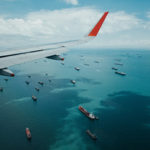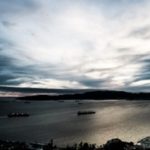Prudent ballast equipment selection critical as D2 countdown drops under 1,000 days
 As 2021 draws to a close, two recent events have reemphasised the growing urgency for ship owners and operators to ensure compliance with the Ballast Water Management Convention. Earlier this month marked 1,000 days until all ships must meet the Convention’s D2 standard. While last month saw a return of ‘harmful aquatic organisms in ballast water’ to MEPC’s agenda. One of the main outcomes of MEPC77, hosted remotely from 22nd to 26th November 2021, was an agreement to progress work on guidance for ships that need to conduct BWM in ports with challenging water, with the view to finalisation at MEPC 78.
As 2021 draws to a close, two recent events have reemphasised the growing urgency for ship owners and operators to ensure compliance with the Ballast Water Management Convention. Earlier this month marked 1,000 days until all ships must meet the Convention’s D2 standard. While last month saw a return of ‘harmful aquatic organisms in ballast water’ to MEPC’s agenda. One of the main outcomes of MEPC77, hosted remotely from 22nd to 26th November 2021, was an agreement to progress work on guidance for ships that need to conduct BWM in ports with challenging water, with the view to finalisation at MEPC 78.
No blanket exceptions
On face value, the official guidance has not changed. But in practice, reinforcing the status quo, sends a clear message to market: there are no blanket exceptions or bypassing of systems for ships operating in challenging waters. This means ship operators must treat the water in sediment-rich areas to the best of their BWMS’s ability.
Growing recognition of oceans as an essential global resource, and regulations and voluntary mechanisms developed to align with this goal, suggests that it is highly unlikely blanket exceptions would ever be implemented. This approach would go against the environmental aims of the Ballast Water Management Convention. It’s also against the UN Sustainable Development Goal 14 Life Below Water and is at odds with the growing tide of environmental activism which is coming to bear on IMO and MEPC.
Actions of regional enforcement agencies add further complexity and uncertainty, with the U.S Environmental Protection Agency (EPA) recently fining the bulker Western Durban and the container ship MSC Aurora for violating the EPA’s Vessel General Permit (VGP) issued under the Clean Water Act (CWA).
All of these complex factors create great uncertainty for ship owners and operators, which can only be safely mitigated by ensuring selected BWMSs are appropriate for the vessel’s unique route and operating profile.
The choice of BWMS and its filter is key to compliance, but it must also be economically sound: not just from a CAPEX standpoint, but also in relation to its long-term OPEX. A new whitepaper published by Filtersafe “The true cost of compliance in the marine BWMS industry” aims to create clarity from complexity by outlining the true costs of compliance with ballast water regulations, highlighting key considerations such as clogging, flow rate, self-cleaning capabilities and testing.
Costs of compliance
No shipowner can afford to risk the cost implications of an unwise equipment choice. This is especially true when it comes to selecting a BWMS and the filter. The priority is that your BWMS reliably treats invasive aquatic species in the long term. Otherwise, you will end up paying fines for non-compliance, which far exceed the costs of compliance. So, how do you achieve reliable treatment?
Firstly, by ensuring that your filter can overcome clogging issues and sediment build-up, and can provide you with a consistent flow rate. Filter clogging can reduce water flow to the BWMS and ballast tanks to less than 5% of the designed rate. Meanwhile, sediment build-up in tanks can reduce carrying capacity and damage tanks. Consistent flow rates are also required to safely maintain a balance between the loading and discharge rates of cargo. Essentially, all of these issues result in inefficiencies, compliance issues, increased maintenance and increased costs. A filter with effective self-cleaning capabilities is the solution and will lower OPEX and maintenance costs.
Other key considerations include ensuring that your BWMS and filter is correctly and efficiently installed, and choosing the right filter for your vessel’s unique operating profile. Filters become especially important if your vessel operates in waters with high total suspended solids (TSS). You must have a filtration system that can handle a wide range of water qualities, does not affect ballasting or de-ballasting rates, is correctly located, and requires minimal maintenance. So, how do you know if a filter will work in challenging water conditions? By making sure that it has passed the Shanghai Test.
The Shanghai Test
The Shanghai Test can highlight the best performing BWMS filters in sediment-rich waters. While current IMO testing standards require a BWMS and filter to function at 50 mg/L TSS, ports such as Shanghai have TSS levels of up to 1,000 mg/L. Therefore, for a BWMS to work in these challenging waters, it should have passed the stringent Shanghai Test, which simulates these conditions.
Filtersafe has long been at the forefront of filter performance and efficiency, particularly in challenging water conditions. While other filter companies have passed the test, filtering to the 1,000 mg/L without clogging, never before has a filter tried and succeeded to filter water as high as 2,450 mg/L, which Filtersafe’s BS 101E filter with a 40μm and standard scanner achieved. In fact, all of its combinations of filter screens and scanners were capable of handling well over 1000 mg/l without blockage, meaning that they all passed the shanghai test with flying colours. You can find out more about Filtersafe’s Shanghai Test results here .
A filter’s design and construction have a big effect on a BWMS’s ability to perform effectively, efficiently and within regulatory parameters. It is therefore an important decision that must balance quality and long-term costs. To stay ahead of the regulations and minimise costs, download our latest whitepaper now: https://filtersafe.net/the-true-cost-of-compliance-in-the-marine-bwms-industry/.
Source: By Mark Riggio, Head of Marine, Filtersafe

 Hellenic Shipping News Worldwide Hellenic Shipping News Worldwide, Online Daily Newspaper on Hellenic and International Shipping
Hellenic Shipping News Worldwide Hellenic Shipping News Worldwide, Online Daily Newspaper on Hellenic and International Shipping






















 PG-Software
PG-Software